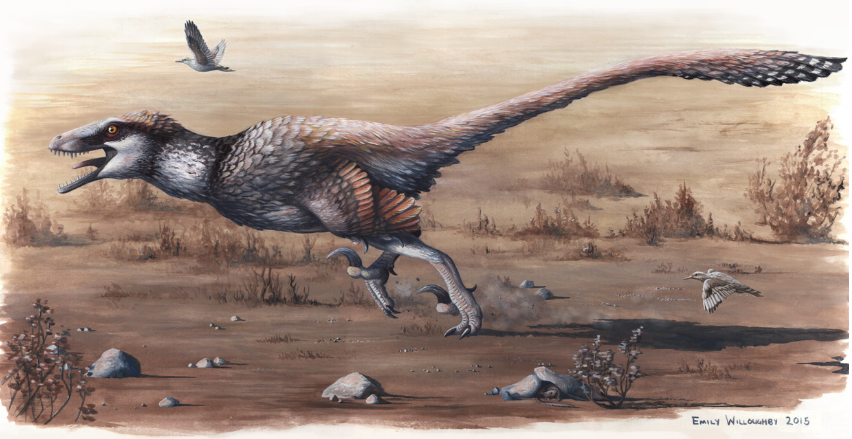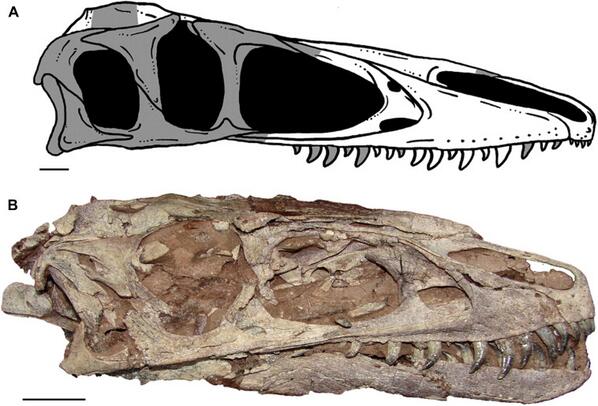Post by theropod on May 25, 2014 13:26:52 GMT 5
Using such generalised trends for large taxa (such as "animals" or "mammals" or "theropods") is bound to give flawed results. Skull lenght in particular is variable, and it depends much more on feeding style or taxonomy than on size.
We will certainly find tendencies towards increasing or reducing skull size within smaller taxa. For example, if we look at large theropods it tends to have slight positive allometry, while in sauropods it has negative allometry.
But in very comprehensive samples surveys, the impact of taxonomy will be more important than the actual relationship with size.
In dinosaurs one might get the impression that they got proportionally smaller skulls with increasing size, simply because all the largest dinosaurs were sauropods (Why? because they were herbivores and not under the same evolutionary pressures as carnivores), while the opposite is true for other major groups. In theropods, one might get the impression that their skulls increased in size, simply because most of the non-macrophagous ones were small, which you cannot necessarily apply to any specific theropod group.
This is always a nice way to put some science into a monster movie, but in real science it is much more important to differentiate.
So I don’t think any of that is relevant for Spinosaurus. Only other spinosaurs are really important, because they are phylogenetically and ecologically close.
Infinity Blade I had read that too, wasn’t it posted previously?
The data are ambiguous in that regard. Most theropod dentitions and crania are far less constructed for withstanding high bite forces than those of mammals, since the predominant skull design is a lightly constructed, oreinirostral one. And them being pneumatic and thin-walled will obviously also have an impact on the proportion of skull mass occupied by musculature. On the other hand, that would still mean there was more musculature in relation to the support structures, so perhaps theropods had smaller savety factors, just like is seen in extant crocodylians.
PS: That reminds me, I should also watch jaws. If it is anything like Alien it must be worth it.
We will certainly find tendencies towards increasing or reducing skull size within smaller taxa. For example, if we look at large theropods it tends to have slight positive allometry, while in sauropods it has negative allometry.
But in very comprehensive samples surveys, the impact of taxonomy will be more important than the actual relationship with size.
In dinosaurs one might get the impression that they got proportionally smaller skulls with increasing size, simply because all the largest dinosaurs were sauropods (Why? because they were herbivores and not under the same evolutionary pressures as carnivores), while the opposite is true for other major groups. In theropods, one might get the impression that their skulls increased in size, simply because most of the non-macrophagous ones were small, which you cannot necessarily apply to any specific theropod group.
This is always a nice way to put some science into a monster movie, but in real science it is much more important to differentiate.
So I don’t think any of that is relevant for Spinosaurus. Only other spinosaurs are really important, because they are phylogenetically and ecologically close.
Infinity Blade I had read that too, wasn’t it posted previously?
The data are ambiguous in that regard. Most theropod dentitions and crania are far less constructed for withstanding high bite forces than those of mammals, since the predominant skull design is a lightly constructed, oreinirostral one. And them being pneumatic and thin-walled will obviously also have an impact on the proportion of skull mass occupied by musculature. On the other hand, that would still mean there was more musculature in relation to the support structures, so perhaps theropods had smaller savety factors, just like is seen in extant crocodylians.
PS: That reminds me, I should also watch jaws. If it is anything like Alien it must be worth it.












